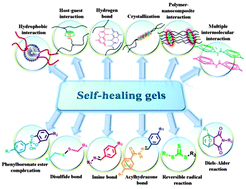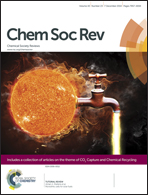Self-healing gels based on constitutional dynamic chemistry and their potential applications
Abstract
As representative soft materials with widespread applications, gels with various functions have been developed. However, traditional gels are vulnerable to stress-induced formation of cracks. The propagation of these cracks may affect the integrity of network structures of gels, resulting in the loss of functionality and limiting the service life of the gels. To address this challenge, self-healing gels that can restore their functionalities and structures after damage have been developed as “smart” soft materials. In this paper, we present an overview of the current strategies for synthesizing self-healing gels based on the concept of constitutional dynamic chemistry, which involves molecular structures capable of establishing dynamic networks based upon physical interactions or chemical reactions. The characterization methods of self-healing gels and the key factors that affect self-healing properties are analyzed. We also illustrate the emerging applications of self-healing gels, with emphasis on their usage in industry (coatings, sealants) and biomedicine (tissue adhesives, agents for drug or cell delivery). We conclude with a perspective on challenges facing the field, along with prospects for future development.


 Please wait while we load your content...
Please wait while we load your content...